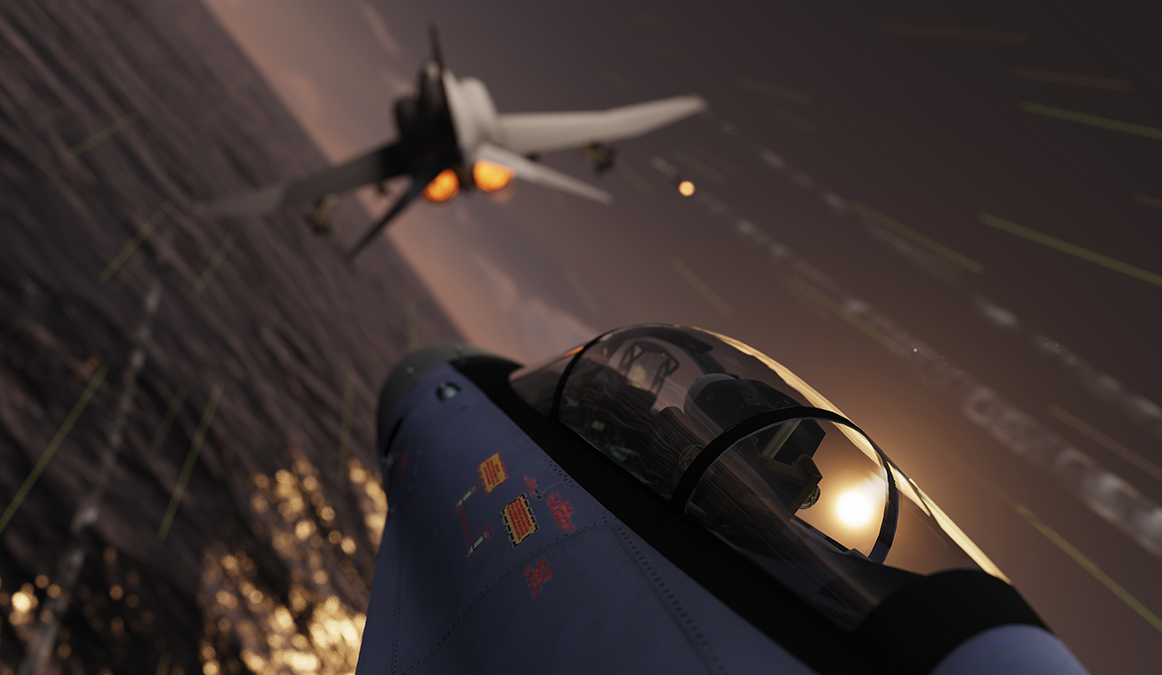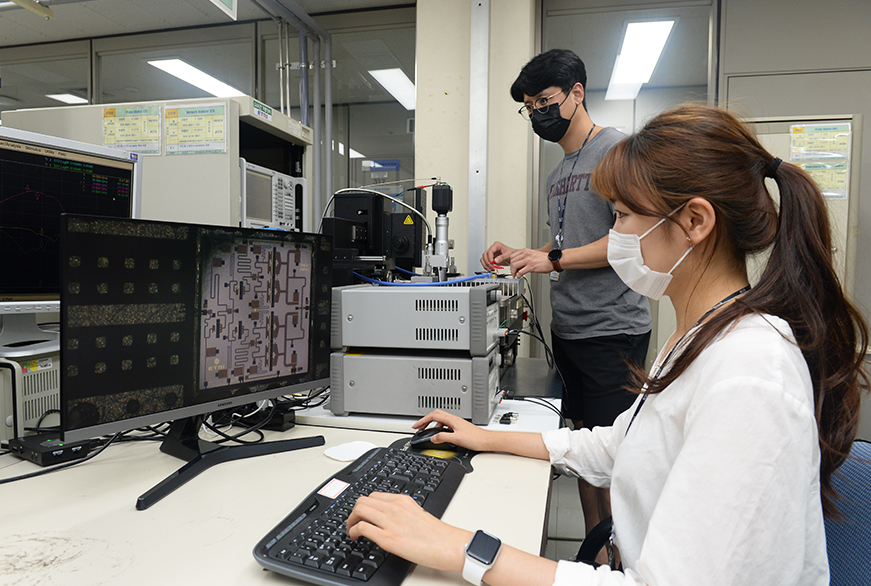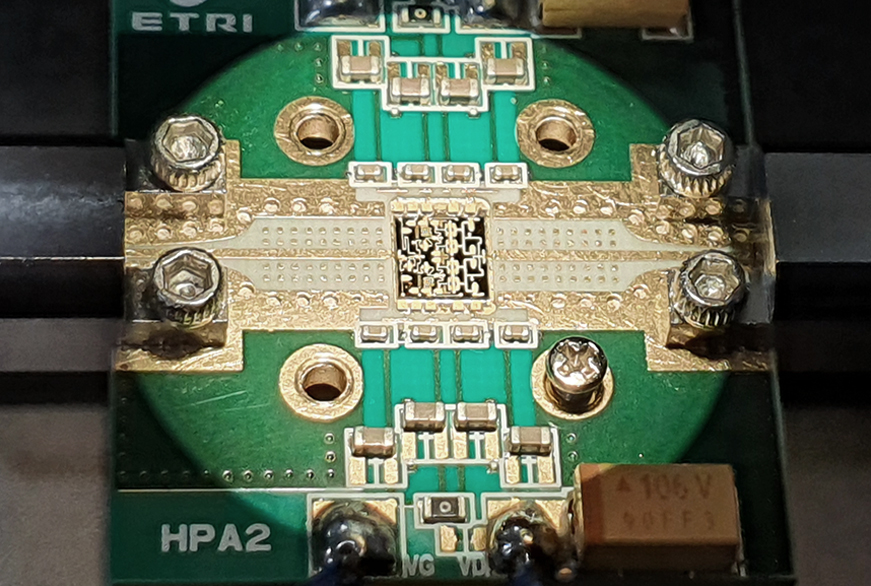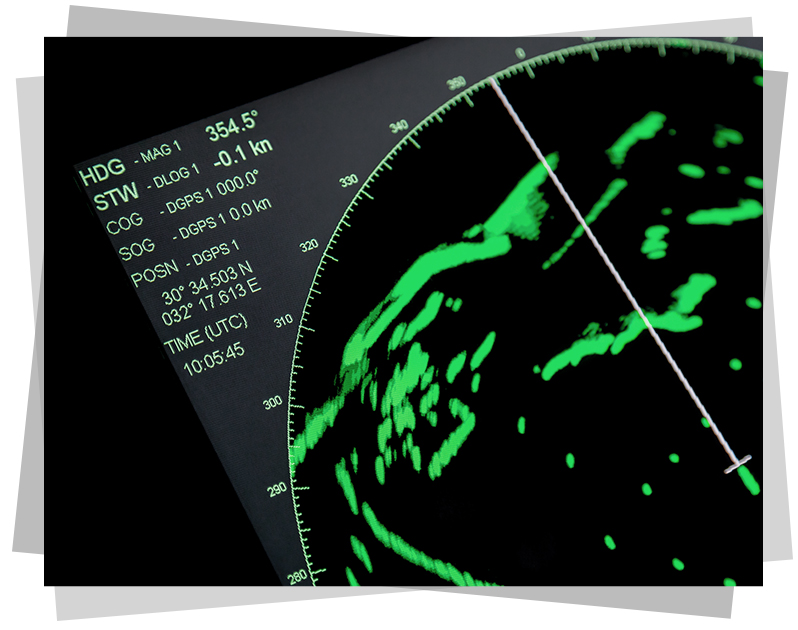VOL. 66 August 2021
The DMC Convergence Research
Department Has Localized
the Core Components of the AESA Radar
- Successful development of two kinds of gallium nitride power amplifiers
- Performance and miniaturization equivalent to USA and European models
for mounting on aircraft and guided weapons, etc.

A domestic research team has successfully localized the core components of radars and seekers. As the team has carried out the design and development with domestic semiconductor technology, the independence of national defense technology will help ensure an active response to export regulations concerning materials, components and equipment.
The DMC Convergence Research Center of the National Research Council of Science & Technology (NST)1) has reported its development of a technology for the gallium nitride (GaN) semiconductor power amplifier IC (MMIC2)), which is the core component of AESA radars.
Advanced fighter planes are equipped with Active Electronically Scanned Array (AESA3)) radars, also known as the “brain of jet fighters” , as they can detect the distance, position and shape of objects accurately and rapidly. Such a function is made by the thousands of sending/receiving modules attached to the front parts of the radars.
Sending/receiving modules are manufactured by integrating semiconductor chips such as switches, power amplifiers (PA4)) and low-noise amplifiers (LNA5)), etc. The X-band6) and Ku-band7) radar sending/receiving power amplifier IC technology was developed this year, following on from the sender/receiver switch IC technology developed last year.
1) DMC (Defense Materials & Components), Managing agency ETRI / Participating agencies: Korea Institute of Machinery and Materials, National NanoFab Center.
2) MMIC, Monolithic Microwave Integrated Circuit Single-chip high-frequency IC to be manufactured via a batch process on a semiconductor plate using active and passive elements.
3) AESA, Active Electronically Scanned Array Sending parts and receiving parts are not separately mounted but take the form of thousands of integrated modules.
4) PA Power Amplifier : Amplifier designed to generate high levels of electric power.
5) LNA Low Noise Amplifier : Amplifier designed to satisfy the minimum noise index of received signals.
6) X-band 8-12GHz band for AESA radars. seekers.
7) Ku-band 12-12GHz band for satellite communication and seekers.


A power amplifier is a piece of equipment, and it processes signals. It also detects and traces targets by amplifying sending signals. Due to the recent shift from Traveling-Wave Tube Amplifiers (TWTA) to Solid State Power Amplifiers (SSPA), the power amplifier IC has become an essential technology for the localization of power amplifiers.
The developed technology will contribute significantly to the localization of AESA radars and seekers8) and help the Korean defense industry by greatly improving the performance of military, ship and satellite communication radars and seekers with regard to the export regulations on military semiconductors.
The X-band power amplifier developed by the research team could generate up to 25W 2GHz 40% efficiency while the Ku-band amplifier could generate up to 20W 2GHz 30% efficiency. The new equipment’s high output of more than ten times the traditional gallium arsenide (GaAs) and the excellent signal conversion efficiency were made possible by the use of gallium nitride,9) which is suitable for high-output power amplifier elements. As more signals can be amplified more powerfully using just a small number of components, more accurate detection of targets is possible, as well as realizing radars to be lightweight.
Its performance is equivalent to commercial products of the USA and Europe, yet it is smaller, making it advantageous for commercialization. The size of the X-band power amplifier chip developed by the research team is a mere 3.5 x 3.6 x 0.1mm, equivalent to 60% the size of European products. The Ku-band power amplifier has dimensions of 3.1 x 3.6 x 0.1mm and is about 23% smaller than similar products from the USA.
8) Seeker Apparatus designed to catch and trace targets and to supply guided steering apparatus with direction and positional information in order to calculate guide instructions.
9) Gallium arsenide (GaAs) generates more than 10 times the power generated by a semiconductor power amplifier MMIC. It is suitable for high-output power amplifier elements.a

The research team said that such outstanding performance could be achieved based on the research expertise it has accumulated over many years in the design and manufacture of various compound semiconductor elements, including gallium nitride. Notably, such an achievement is even more meaningful in the sense that a framework has been made to localize gallium nitride IC components for the ROK military, which has hitherto been highly dependent on overseas foundries and imports, because it is the first IC to be designed and manufactured purely with Korean technology.
Lim Jong-Won, assistant vice president of DMC Convergence Research Department, said, “The research team obtained the technology for a high-output power amplifier and a switch IC based on the design research process technology of the center. This technology will make a significant contribution to expanding Korean defense technology and responding to import regulations on materials, components and equipment.”
The DMC Convergence Research Center is planning to transfer the technology to related industrial areas and to conduct credibility tests to satisfy the performance requirements of military components. In addition, the center will conduct successive researches on a single sending/receiving chip IC to integrate switch, power amplifier, low-noise amplifierand MMIC, etc. for each of three wave-length C-/X-/Ku-bands based on the technology until 2022.
Such an achievement was made as part of a fusion research project of the National Research Council of Science & Technology for “the development of an independent platform for core semiconductor components of national defense weapon systems.” It is the result of research on independent high-performance core national defense component technology coupled with the fusion of excellent technologies possessed by industries, academies and institutions, with the participation of the Korea Institute of Machinery, Materials and the National NanoFab Center under the management of ETRI.

